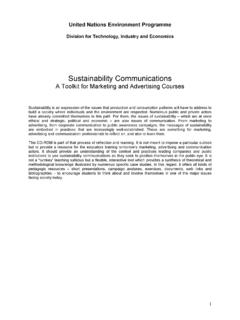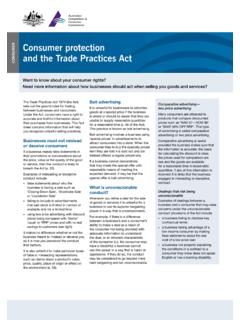Transcription of Flywheel Models + iQiyi (NASDAQ: IQ) - haydencapital.com
1 Flywheel Models + iQiyi (NASDAQ: IQ). An Investment Case Study By Hayden Capital ValueX Vail | June 27-29, 2018. Hayden Capital 79 Madison Ave, 3rd Floor New York, NY. 10016. Office: (646) 883-8805. Mobile: (513) 304-3313. Email: Disclaimer These materials shall not constitute an offer to sell or the solicitation of an offer to buy any interests in any fund or account managed by Hayden Capital LLC ( Hayden Capital ) or any of its affiliates. Such an offer to sell or solicitation of an offer to buy will only be made pursuant to definitive subscription documents between a fund and an investor. The fees and expenses charged in connection with the investment may be higher than the fees and expenses of other investment alternatives and may offset profits.
2 No assurance can be given that the investment objective will be achieved or that an investor will receive a return of all or part of his or her investment. Investment results may vary substantially over any given time period. Reference and comparisons are made to the performance of other indices (together the comparative Indexes ) for informational purposes only. Hayden Capital's investment program does not mirror any of the comparative Indexes and the volatility of Hayden Capital's investment strategy may be materially different than that of the comparative Indexes. The securities or other instruments included in the comparative Indexes are not necessarily included in Hayden Capital's investment program and criteria for inclusion in the comparative Indexes are different than those for investment by Hayden Capital.
3 The performance of the comparative Indexes was obtained from published sources believed to be reliable, but which are not warranted as to accuracy or completeness. Unless noted otherwise, the returns of the comparative Indexes presented do not reflect fees or transaction costs, but those returns do reflect net dividends, if any. Fred Liu, CFA | 646-883-8805 | 2. Who Is Hayden Capital? Investment Strategy: We invest primarily via a long-biased, low-turnover, global equity strategy. Investments are under-written with a 10+ year view. The goal is to compound our capital in-line with these businesses' growth in earnings power. We focus on underlying business unit economics, as opposed to market factors like sentiment or multiple expansion, as the source of our returns.
4 Our typical portfolio comprises of 6 15 high-quality companies, that we have studied for an extensive period. We don't aim to beta-hedge our positions, as this typically results in sacrificing long-term gains for reducing short-term volatility. As long-term investors, we would rather have a superior (although lumpy) annual return, than a steady (but mediocre). return. In fact, we embrace volatility in most cases as it allows us to purchase companies we like for cheaper. Investment Objective: Achieve returns exceeding the broader Global Equity Markets (measured by the S&P 500 and MSCI World), over a full market cycle. Hayden Capital seeks to achieve these returns primarily through publicly traded, marketable securities of and companies.
5 No complex derivatives, pair-trades , or significant use of leverage. All accounts are Separately Managed Accounts ( SMAs ), as opposed to a pooled structure. We think this is in the best interests of our clients, as it provides clients full ownership of their investments, daily liquidity, and transparency. Fred Liu, CFA | 646-883-8805 | 3. About Me Fred Liu, CFA. Managing Partner Fred Liu is Hayden Capital's founder and portfolio manager. He holds a in finance and international business from the Leonard N. Stern School of Business at New York University. He also holds the Chartered Financial Analyst (CFA) designation. Prior to founding Hayden Capital, Fred was a research analyst at New Street Research responsible for covering the cable and satellite industries.
6 Before this, he was the industrials analyst on Morgan's Small Cap Equity fund, a five-star Morningstar ranked strategy that invested in securities under $2 Billion in market cap. Fred purchased his first stock at the age of 11, and has been an avid value investor ever since. He currently resides in New York City. Fred Liu, CFA | 646-883-8805 | 4. Here's How We've Done So Far . It's still extremely early, especially given our decade-long horizon. Our thesis isn't proven yet, and if we were a VC/PE fund, we'd still be in the investment period of the strategy. But I'm glad to be adding value to my partners thus far . Performance Table Cumulative Return Since Inception Return percentage during period Compared to S&P 500 Total Return Index & MSCI All-Country World Index 1 Hayden Capital returns are net of actual fees.
7 Individual client performance may differ based on fee schedule and date of funding. 2 Includes Cash and previously an Inverse S&P 500 ETF, which allowed us to decrease our long exposure without paying taxes on profitable positions. 3 Hayden Capital launched on November 13, 2014. Performance for both Hayden Capital and indexes reflects performance beginning on this date. 4 Quarter-to-date performance as of June 13, 2018. Fred Liu, CFA | 646-883-8805 | 5. Flywheel Business Models It's our specialty . Fred Liu, CFA | 646-883-8805 | 6. What is a Flywheel ? Traditionally, a Flywheel is a spinning rotor used for storing kinetic energy.
8 It takes a relatively large amount of energy to get started, but very little to keep it moving once it gets going. In business, the Flywheel effect concept is used to explain the notion of positive-feedback loops. The idea is once the business model gets momentum, output of the business (ex. such as increased volume) directly leads to positive inputs (ex. lower costs per unit), which leads to better outputs (lower costs = lower prices = more volume). This creates a virtuous cycle , with very little energy wasted and is very hard to stop once it gets going. Most of Hayden's investments feature this concept in some capacity. Old-School Flywheel New-School Flywheel .
9 A Flywheel used for smoothing energy output Amazon's Famous Flywheel Sketch Fred Liu, CFA | 646-883-8805 | 7. Margin Reinvestment Profiles Reinvestment Scenario: A company is taking profits from highly profitable lines of business, and investing them into newer lines of business. This makes the overall margins seem very low, or even negative. Pricing Power Scenario: A company prices its product far below the value-add to the customer. But as customers start to depend upon a company's products or services, the company has the ability to ask for more over time. We believe the best companies are those that have both elements. What if by raising the price, you can actually widen / increase the value for the customer ( the Customer Value to Price ratio)?
10 Such a price increase would actually accelerate the company's growth. You can get double benefits , as price increases give the company more cash flow to reinvest into increasing the customer value, which attracts more customers / speeds up the growth rate, and thus generates even more cash. Our thesis is: growth through volume (because you provide the best product) is more sustainable than growth through pricing. And consistently reinvesting pricing increases into generating more customer value is the most sustainable moat of them all. Margin Profile #1 Reinvestment Margin Profile #2 Pricing Power Excess profits from mature projects are invested into new projects Company is pricing its product far below the value offered Fred Liu, CFA | 646-883-8805 | 8.










